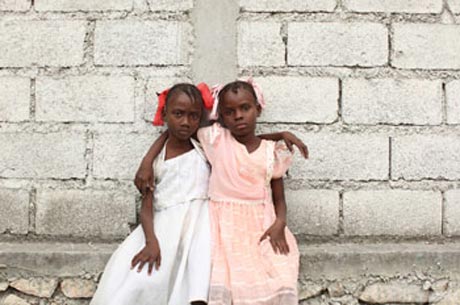Ozier Muhammad
Photojournalist, The New York Times
“Telling Visual Stories”
The
New York Times coverage of earthquake in Haiti
March 2010 | University of Minnesota

Photo courtesy of Ozier Muhammad and The New York Times
The New York Times, in conjunction with my department, Postsecondary Teaching and Learning, hosted a "Coffee with The Times" where photojournalist, Ozier Muhammad, presented his recent images of Haiti. About forty people, including some of the water seminar students, Twin Cities community members, and colleagues throughout the University of Minnesota, watched Muhammad’s extraordinary images as he described the events that led to his work for The Times in Haiti. He was stuck in New York City traffic, turned on the radio to hear about the earthquake, and within 48 hours was moving through the smoke-filled tumult of the streets of Port au Prince, as well as out to more rural sites to chronicle what remained of villages. I like how Muhammad allowed his images to speak, and added details of the experiences as needed.
When students learn with community members and colleagues, they understand that their intellectual work is part of the ongoing discourse between what we do at the University, and water resource events that are unfolding across the globe and in our backyard. (I could hit a tennis ball out my classroom window and it would land in the Mississippi River.)
Muhammad’s images honor the integrity of both the viewer and the viewed, and are a reminder of the vibrant resilience of Haitians. Access to freshwater is a crucial factor in the Haitians move toward self-sufficiency. When audience members asked him how we could best support Haitians in their ongoing process of earthquake recovery, as well as the incremental struggle of moving toward a more just society, he suggested people give support to organizations that have been on the ground and working with Haitians and are made up of Haitians as well as other supportive citizens; groups which have a good track record for understanding how the Haitian government works, and what both the people and the land need in order to thrive.
When I asked him what advice he would give to students who are using images to help educate and engage the viewer, he said, “Use your images to move the story forward.”
Resources
Ozier Muhammad’s photographs from Haiti
When students learn with community members and colleagues, they understand that their intellectual work is part of the ongoing discourse between what we do at the University and water resource events that are unfolding across the globe and in our backyard.– Linda Buturian, Seminar Instructor